
The Ivy League is an American collegiate athletic conference, comprising eight private research universities in the Northeastern United States. The term Ivy League is typically used outside sports to refer to the eight schools as a group of elite colleges with connotations of academic excellence, selectivity in admissions, and social elitism. Its members are Brown University, Columbia University, Cornell University, Dartmouth College, Harvard University, Princeton University, University of Pennsylvania ("Penn"), and Yale University. The conference headquarters are in Princeton, New Jersey.

The University of Pennsylvania is a private Ivy League research university in Philadelphia, Pennsylvania. It is one of nine colonial colleges and was chartered prior to the U.S. Declaration of Independence when Benjamin Franklin, the university's founder and first president, advocated for an educational institution that trained leaders in academia, commerce, and public service. Penn identifies as the fourth oldest institution of higher education in the United States, though this representation is challenged by other universities, as Franklin first convened the board of trustees in 1749, arguably making it the fifth oldest institution of higher education in the U.S.

1751 (MDCCLI) was a common year starting on Friday of the Gregorian calendar and a common year starting on Tuesday of the Julian calendar, the 1751st year of the Common Era (CE) and Anno Domini (AD) designations, the 751st year of the 2nd millennium, the 51st year of the 18th century, and the 2nd year of the 1750s decade. As of the start of 1751, the Gregorian calendar was 11 days ahead of the Julian calendar, which remained in localized use until 1923.
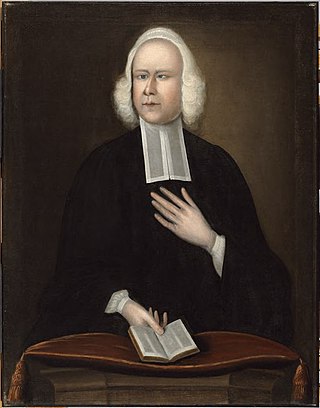
George Whitefield, also known as George Whitfield, was an Anglican cleric and evangelist who was one of the founders of Methodism and the evangelical movement.

The Province of Pennsylvania, also known as the Pennsylvania Colony, was a British North American colony founded by William Penn, who received the land through a grant from Charles II of England in 1681. The name Pennsylvania was derived from "Penn's Woods", referring to William's father Admiral Sir William Penn.
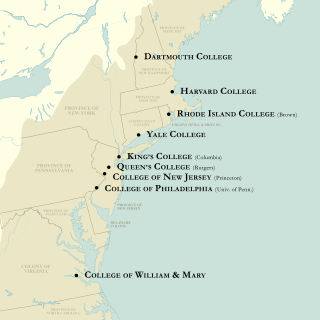
The colonial colleges are nine institutions of higher education chartered in the Thirteen Colonies before the United States of America became a sovereign nation after the American Revolution. These nine have long been considered together, notably since the survey of their origins in the 1907 The Cambridge History of English and American Literature.

Pennsylvania Hospital is a private, non-profit, 515-bed teaching hospital located in Center City Philadelphia and is part of the University of Pennsylvania Health System. Founded on May 11, 1751, by Benjamin Franklin and Thomas Bond, Pennsylvania Hospital is one of the earliest established public hospitals in the United States. It is also home to America's first surgical amphitheatre and its first medical library. The hospital's main building, dating to 1756, is a National Historic Landmark.

Gilbert Tennent was a Presbyterian revivalist minister in Colonial America. Born into a Scotch-Irish family in County Armagh, Ireland, he migrated to America with his parents, studied theology, and along with Jonathan Edwards and George Whitefield, became one of the leaders of the evangelical revival known as the First Great Awakening. His most famous sermon, On the Danger of an Unconverted Ministry, also known as the "Nottingham Sermon," compared "Old Side" ministers to the biblical Pharisees of the Gospels, triggering a schism in the Presbyterian Church which lasted for 17 years. A prolific writer, Tennent would later work towards reunification of the two synods involved.
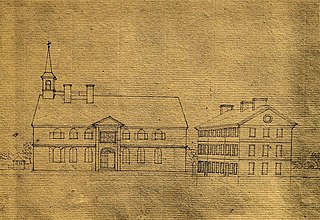
The Academy and College of Philadelphia (1749-1791) was a boys' school and men's college in Philadelphia, Colony of Pennsylvania.

Bethesda Academy is a boys' school and former orphanage located in unincorporated Chatham County, Georgia, in the United States, near Savannah. Its historic building was listed on the National Register of Historic Places in 1973.

Richard Peters, born in Liverpool became an attorney, Anglican minister, and civil servant. In 1735 he emigrated to Pennsylvania, where he served in numerous posts for the Penn family, including on the Governor's Council from 1749 to 1775, and eventually became rector of Christ Church in Philadelphia.

First university in the United States is a status asserted by more than one U.S. university. When the Philippines was still a United States territory, the University of Santo Tomas, which was established in 1611, was considered the oldest university under the American flag. Presently in the United States, there is no official nationwide definition of what entitles an institution to be considered a university versus a college while differing official definitions are used at the state level, and the common understanding of university has evolved over time. The 1911 Encyclopædia Britannica describes the gradual emergence of U.S. universities as follows:
In the United States the word university has been applied to institutions of the most diverse character, and it is only since 1880 or thereabouts that an effort has been seriously made to distinguish between collegiate and university instruction; nor has that effort yet completely succeeded. Harvard, William and Mary, and Yale. .. were organized. .. on the plans of the English colleges which constitute the universities of Oxford and Cambridge. Graduates of Harvard and Yale carried these British traditions to other places, and similar colleges grew up in New York, New Jersey, Pennsylvania, New Hampshire and Rhode Island.... Around or near these nuclei, during the course of the 19th century, one or more professional schools were frequently attached, and so the word university was naturally applied to a group of schools associated more or less closely with a central school or college. Harvard, for example, most comprehensive of all, has seventeen distinct departments, and Yale has almost as many. Columbia and Penn have a similar scope. In the latter part of the 19th century Yale, Columbia, Princeton and Brown, in recognition of their enlargement, formally changed their titles from colleges to universities.
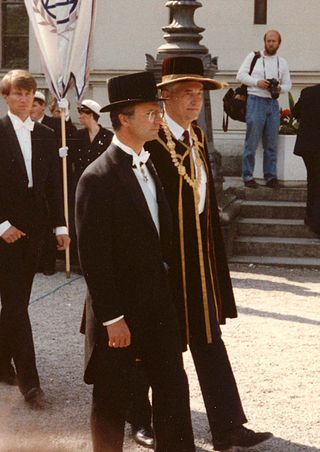
An academic procession is a traditional ceremony in which university dignitaries march together wearing traditional academic dress. An academic procession forms a usual part of college and university graduation exercises. At many U.S. universities, the colors and styles of regalia are determined by a uniform dress code established in 1895.

Edmund Woolley (c.1695—1771) was an English-born American architect and master carpenter, best known for building Independence Hall in Philadelphia, Pennsylvania, United States.
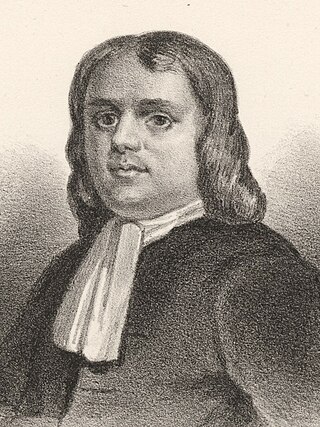
Isaac Norris was a merchant and statesman in provincial Pennsylvania.
The University of Pennsylvania School of Arts and Sciences is the academic institution encompassing the humanities, social sciences, and natural sciences at the University of Pennsylvania.
The institution now known as the University of Pennsylvania was founded as a secondary school in 1740 and by the time of the American Revolution had grown to include a college and medical school called the College of Philadelphia. While it operated under a state charter, it was a private institution with its own board of trustees. Many were Loyalists, and when the revolutionary government of Pennsylvania regained control of the city of Philadelphia after the British occupation of 1777-8, it rechartered the institution as the "University of the State of Pennsylvania," appointed new trustees, and dismissed Provost William Smith. Following repeated lawsuits by Smith and the original trustees, the state restored the college's charter in 1789, but the university continued to operate on the original campus. The two competing institutions merged in 1791, forming the University of Pennsylvania.

The Quadrangle Dormitories are a complex of 39 conjoined residence houses at the University of Pennsylvania, in Philadelphia, Pennsylvania, United States. The architectural firm of Cope and Stewardson designed the houses in an exuberant Neo-Jacobean version of the Collegiate Gothic style, and completed most of them between 1894 and 1912. The dormitories stretch from 36th to 38th Streets and from Spruce Street to Hamilton Walk. West of the Memorial Tower at 37th Street, the houses on the north side follow the diagonal of Woodland Avenue and form a long triangle with the houses on the south side. From 1895 to 1971, the dormitories housed only male students.
The University of Pennsylvania College of Arts & Sciences (CAS) is the oldest undergraduate college at the University of Pennsylvania, a private Ivy League university, situated on the university's main campus in University City, Philadelphia. The college traces its roots to the establishment of a secondary school known as Unnamed Charity School in 1740. In 1749, Benjamin Franklin and twenty-one leading citizens of Philadelphia officially founded a secondary school named Academy of Philadelphia. In 1755, the secondary school was expanded to include a collegiate division known as College of Philadelphia. The secondary and collegiate institutions were known collectively as The academy and College of Philadelphia. The college received its charter from Thomas Penn and Richard Penn. Penn CAS is the oldest institution of higher learning in the state of Pennsylvania and the sixth-oldest chartered college in the United States.
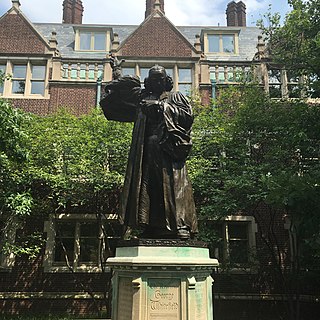
The Reverend George Whitefield is a monumental statue which once stood on the campus of the University of Pennsylvania in Philadelphia, Pennsylvania, United States. Dedicated in 1919, it was designed by sculptor R. Tait McKenzie and honors its namesake George Whitefield, Anglican cleric who was a founder of Methodism. In 2020, in reaction to the George Floyd protests, the university administration removed the statue due to Whitefield's defense of slavery.



















